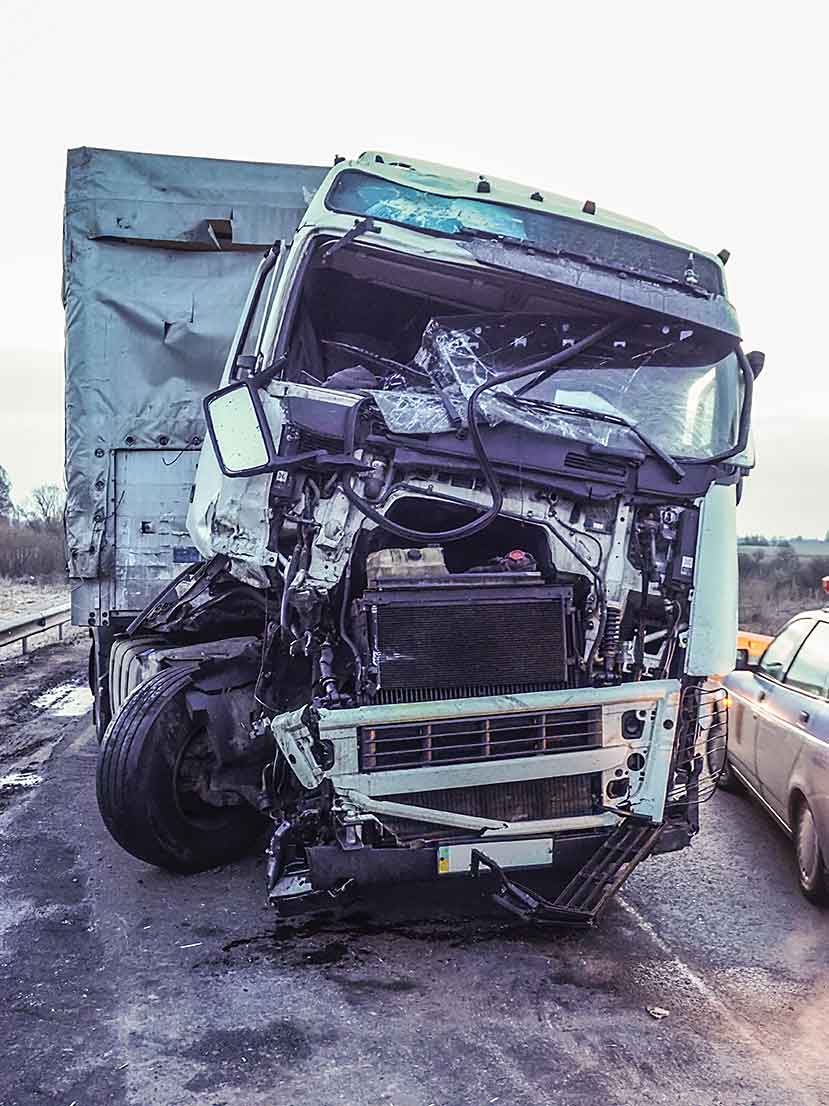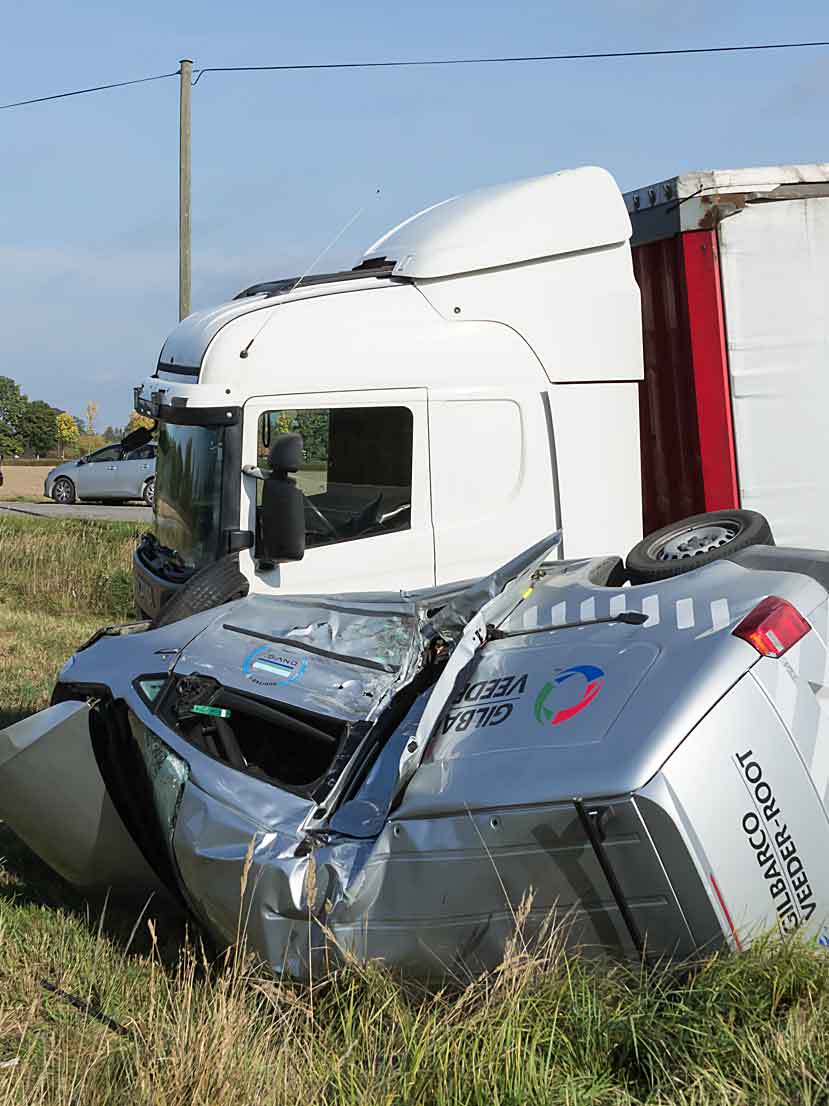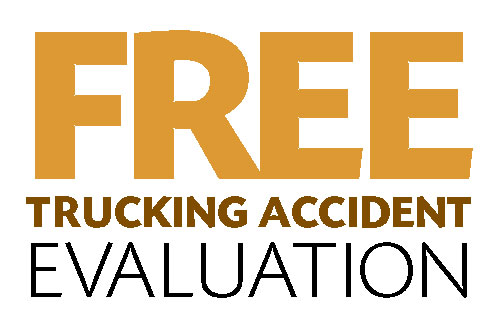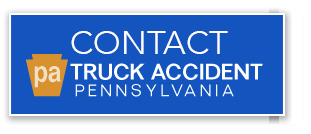Most Pennsylvania truck accidents that result in injuries occur on highways and freeways rather than local roads. They happen for a variety of reasons and cause a variety of harms. The most serious accidents result in fatal or permanently disabling injuries.
The severity of a truck accident is related to type of accident that caused the victim’s injuries. Unfortunately, given the difference in size between a semi and a passenger car, almost any collision with a large truck can lead to serious harm.
To better understand why collisions with tractor-trailers and other heavy commercial vehicles are so devastating, here is a guide to the most common types of truck accidents on Pennsylvania roads.
Head-on Collisions

The deadliest accidents with big rigs and other large trucks are head-on collisions. A head-on collision with a passenger car occurs when either the truck or the car crosses a dividing line and enters a lane of oncoming traffic.
Nearly a third of all fatal collisions with large trucks are head-on collisions. When truck accidents occur at highway speeds, drivers of smaller vehicles are defenseless. Head-on collisions between two cars have become increasingly survivable, thanks to safety harnesses, airbags, and the crumple zones that are built into the front end of passenger cars. Those safety features are less successful at overcoming the force generated by a 35,000-pound semi carrying another 40,000 pounds of cargo.
About 10% of head-on collisions occur on a curve, where centrifugal force may pull a truck that is moving too fast into another traffic lane. Most head-on collisions, however, occur on a straight stretch of highway.
Driver inattention and fatigue typically contribute to head-on collisions. Drivers may drift across a centerline when they are concentrating on a smartphone instead of the road or when they fall asleep at the wheel. Less often, equipment failure (such as a broken steering mechanism) will cause a truck to lurch into the path of oncoming traffic.
Identifying fault in a head-on collision usually hinges on where the accident occurred. When one vehicle obviously strayed into a lane of opposing traffic, fault is clear. When the collision occurred near the centerline, a Pennsylvania truck accident lawyer might hire an accident reconstruction engineer to determine which vehicle crossed the line.
Rear-end Collisions
Eighteen-wheelers need more stopping distance than lighter vehicles. Apart from the fact that a vehicle’s weight adds to its stopping distance, the lag time associated with air brakes (the time it takes for air to travel through the system and activate the brakes) increases the stopping time of semis.
A 4,000-pound passenger car moving at 65 mph on a dry road travels about 316 feet between the time a driver perceives a road hazard and the time the vehicle comes to a complete stop. At the same speed and road conditions, an 80,000-pound tractor-trailer equipped with air brakes travels about 525 feet before it stops.
While the driver of a passenger car who sees that traffic has slowed or stopped will usually be able to avoid a collision, the driver of a semi driving at the same speed will have less opportunity to avoid a crash. Trucker drivers have a duty to keep stopping distances in mind and to drive at safe speeds so they can stop in time to avoid rear-end collisions.
Unfortunately, not all truck drivers are cautious. Almost a quarter of all traffic accidents involving large trucks are rear-end collisions. In fact, rear-end collisions are the most common nonfatal crash involving large trucks.

Intersection Collisions
About a quarter of all collisions with trucks occur at intersections. Intersection collisions can occur on city streets or where two highways meet. Nearly half of all collisions with pedestrians occur at urban intersections.
While highway intersection collisions are often deadly because they tend to occur at high speeds, even a relatively low-speed collision in an urban intersection can be deadly. Unless a car is equipped with side-impact airbags, drivers and passengers have little protection from injury in T-bone collisions with large trucks. The force of a heavy truck striking the side of a car or SUV can also cause the smaller vehicle to roll over, leading to crush injuries and brain damage caused by collapsing roofs.
When an intersection is controlled by a traffic light or stop sign, truck drivers are at fault when they fail to obey the sign or signal. A driver’s decision to “beat the light” can be tragic. At uncontrolled intersections, an impatient or inattentive driver’s failure to yield the right of way established by traffic laws is the usual cause of collisions.
Chain Reaction Collisions
Rear-end collisions are also the usual cause of multiple-vehicle collisions. When traffic is backed up on a highway, a truck that rear-ends a vehicle will push that vehicle forward, causing it to collide with the next vehicle in line. Sometimes known as pileups, a chain-reaction collision may involve dozens of vehicles. A notorious pileup on the Pennsylvania Turnpike in the winter of 2014 involved 75 vehicles, while another 30 vehicles collided just east of the initial crash site.
Chain-reaction collisions can also lead to other kinds of crashes. For instance, a car in the chain might be pushed out of the traffic lane, forcing it to travel across a median and enter a lane of oncoming traffic, causing a head-on collision.
Sideswipe Collisions
Sideswipes occur when the side of a truck makes contact with the side of another vehicle. They usually happen when a truck changes lanes and hits a vehicle that is in its blind spot, or when a truck fails to yield while merging from an on-ramp into an occupied lane.
About 16% of accidents with semis are sideswipes. Truck drivers can prevent sideswipes by making a careful observation before changing lanes. Properly equipped trucks have blind spot mirrors that enable drivers to see every part of the lane into which they are merging.
Small vehicles, particularly motorcycles, are often involved in sideswipe collisions because they are less noticeable than other trucks and SUVs. Collisions with bicyclists who are riding on the edge or shoulder of a highway are usually sideswipes. Many of those are caused by truck drivers who fail to share the road by giving bicyclists sufficient clearance when they pass.
Jackknife Accidents
Tractor-trailers jackknife when the tractor moves in one direction and the trailer does not follow. The jackknife brings the rig to a halt, often blocking several lanes of traffic and creating a hazard for drivers who failed to anticipate that a jackknifed semi would suddenly create a barrier in their traffic lanes.
Jackknifes can be attributed to driver error, equipment malfunctions, or road conditions. When roads are particularly wet or icy, however, prudent drivers compensate by slowing down, driving cautiously, or waiting for conditions to improve before continuing a journey.
Jackknifing occurs when tractor axles lock up before trailer axles during braking. That can happen because brakes are out of adjustment or because a driver slammed on the brakes rather than reducing speed carefully. Taking a curve too fast can also lead to jackknifing, which in turn leads to collisions when vehicles crash into the portion of the truck that is suddenly blocking their lane.
Collisions While Backing
Unless a big rig is equipped with a camera, drivers have no view directly behind the truck when they operate in reverse. Elderly pedestrians, young bicyclists, and other accident victims who cannot get out of the way of the moving truck may suffer from serious injuries when a driver fails to make certain that it is safe to back up a truck.
Rollover Accidents
Like jackknife accidents, a truck can roll over when a driver enters a curve at a high rate of speed and is unable to control the truck. Most large trucks (not just tractor-trailers) are vulnerable to rolling over because, unlike a passenger car, they have a high center of gravity.
Improper cargo distribution can contribute to a rollover. Cargo should be distributed evenly within a truck or trailer. Even when cargo is distributed correctly, it can shift if it is not properly secured. Too much cargo on one side can affect balance, making a truck prone to a rollover on curves or during evasive maneuvers.
Rollovers may injure the truck driver, but they pose a risk to other drivers who are following the truck. When the truck loses control and rolls over, it creates a hazard for vehicles that must stop quickly or maneuver around the truck. A rolled truck can also slide across traffic lanes, colliding with cars that occupy those lanes.
Cargo Spills
Truck drivers do not always load their own cargo, but it is always their responsibility to assure that it is loaded and secured properly. When cargo is not secured properly, it can spill out of a truck and into the path of an oncoming car.
For example, logs on a logging truck are usually held in place by chains. If the chains come loose, logs can roll onto the highway, smashing into cars or forcing cars to take evasive action that may result in multiple-car collisions.
Equipment Failures
Truck tires that come apart, defective steering mechanisms, and brake failures can all cause a driver to lose control of a semi. Even when the driver avoids a collision, debris in the road, including truck wheels that come off and roll in front of oncoming cars, can cause serious accidents.
Truck drivers and the companies that assign them trucks have a duty to inspect their vehicles and keep them safe. Equipment failures that cause accident injuries are nearly always the fault of the truck owner, the driver, or both.
Pennsylvania Truck Accident Lawyers
If you were injured or if a family member died in a Pennsylvania truck accident, we extend our heartfelt sympathy. We want to help you and your family. To learn about your rights as the victim of a collision with a tractor-trailer or other large truck, call us at xxx-xxx-xxxx or ask us a question by using our contact form.




